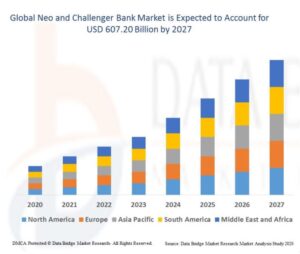Covid-19 has caused upheaval to all our lives. The pandemic has given rise to a new pernicious threat: fraudsters, who prey on vulnerable individuals/organizations and seek to exploit this dreadful humanitarian crisis for their benefit. Banks and other financial providers’ fraud teams – even when facing the upheaval and disruption that has affected all of us – have dealt with a busy workload while the rest of the country lives under lockdown. As the fraud attempts are evolving just as quickly and pushing financial institutions to seek new strategies to manage risk and stay ahead of criminals.
Fraud Trends in Financial Services and Lending
The pandemic effect: The COVID-19 pandemic has had a significantly negative impact on financial services and lending firms. The volume of successful attacks has risen across segments during COVID-19, most dramatically among larger institutions, causing a spike in the cost of fraud. Both digital and non-digital firms have felt the negative impact of the pandemic, particularly banks and credit lenders that processed Paycheck Protection Program (PPP) applications. The rise in costs largely results from an increase in internal labor and/or external support to detect, investigate and recover losses, particularly for those handling PPP requests
Identity frauds: The pandemic has accelerated the move from checks and cash to contactless and electronic payments. The rise in person-to-person payments is a good example. But with that shift, there are more scams, more account takeovers, and more sophisticated identity fraud.
The Rising level of sophistication in fraud attacks: High-quality and low-cost compromised data continue to be readily available on the dark web. When coupled with a criminal’s application of machine learning, it puts more strain on fraud teams to continue adapting.
“Analysis from Experian and the National Hunter Fraud Prevention Service shows a rise in fraud rates, with a 33% increase across all financial products in April – the first full month of lockdown – when compared with previous monthly averages. The largest increase was in the car and other asset finance applications, which saw a rise of 181%, followed by saving accounts (up 28%). Fraudulent credit card applications (17%) and unsecured loans (10%) also went up”.
Steps to combat fraud attacks
Effective fraud prevention strategies can be implemented both in Operational Processes and Technological Approaches.
Operational Processes: Educate customers center executives and customers about scams, account takeover, and identity theft. Organizations must ensure access to its data, all of the time. The more data you can leverage to, truly drive a 360-degree view of the client, transaction, and engagement, the better for your business and fraud-mitigation efforts.
Role of Technology: AI, Machine Learning, and adaptive behavioral analytics are the best option to fight fraud.
Tackling Risk with AI and ML
Machine learning helps data scientists efficiently determine which transactions are most likely to be fraudulent, while significantly reducing false positives. The techniques are extremely effective in fraud prevention and detection, as they allow for the automated discovery of patterns across large volumes of streaming transactions. ML systems allow for more accurate rule creation and pattern building, developing insights purely from data.
Integrate data across touchpoints and channels for stronger monitoring and more meaningful pattern recognition. Organizations should leverage the ability to consume and integrate data from different digital channels to create single views that could provide more insights than disparate monitoring.
AI and ML technologies can significantly improve the efficacy of early warning signal models, providing organizations with better insights into which accounts are headed towards non-performing assets (NPA) status.
Benefits of leveraging AI in combating fraud
Real-time fraud identification: An exponential spike in the number of real-time payments has led traditional rule-based fraud detection solution to come under pressure and result in false conclusions. Here AI enables financial firms to determine whether a transaction is genuine within a fraction of a second.
Predict and counter new-age frauds: Advancement in big data analytics and ML applications enable organizations to stay one step ahead of fraudsters by predicting and tagging any suspicious behavior that might lead to a new type of fraud.
Improved compliance: Elementary ML models can be easily developed to adhere to various compliance checks and protocols with minimal human intervention.
How Insight Consultants can help in combating fraud
Obtaining the right information from customers at the right time and in a fair manner would be the key for any company to be at an information advantage. Such a capability would require multiple integrations with enterprise applications and other third-party applications. We can help you set-up an ecosystem that ensures real-time data access and storage are protected and safe. Contact Us

